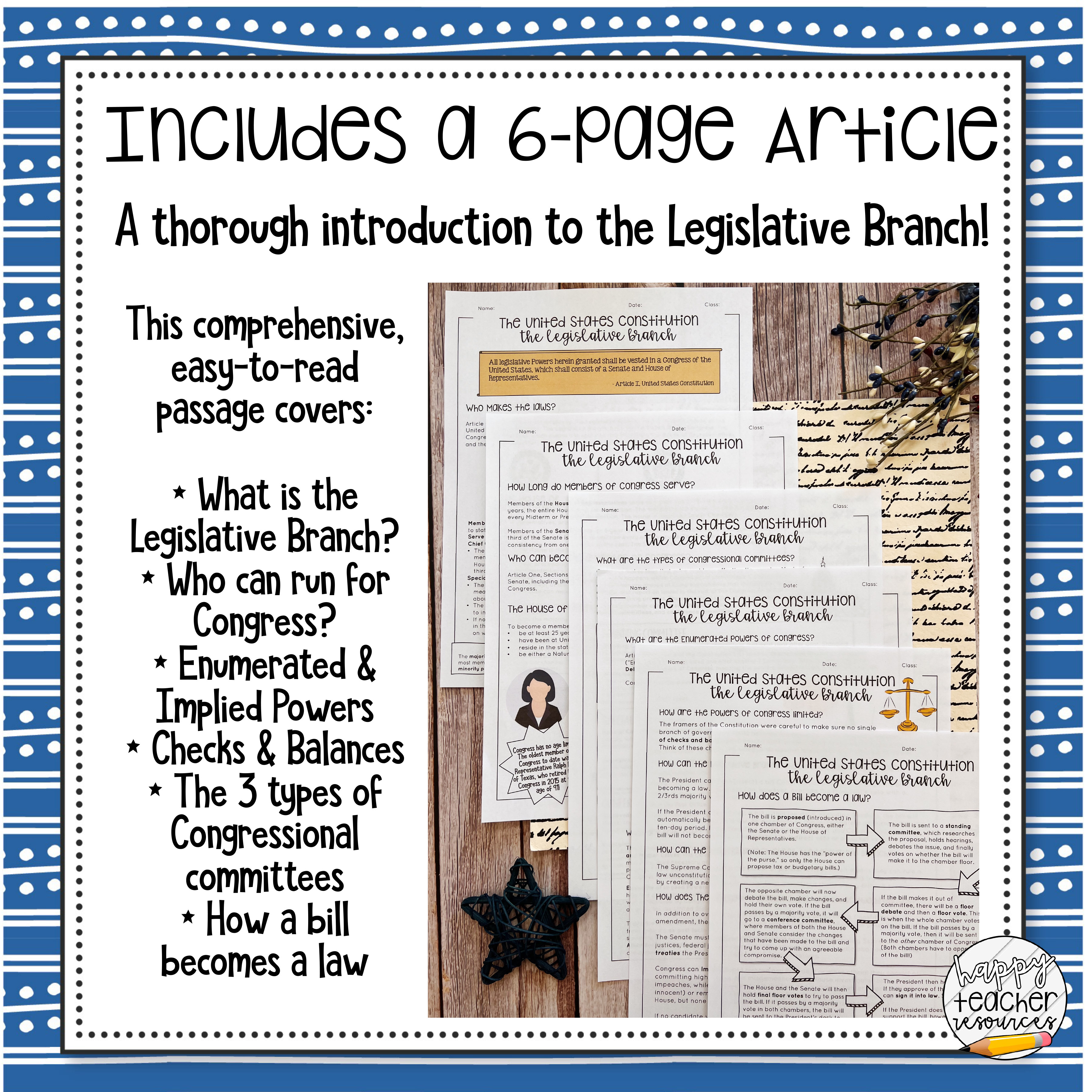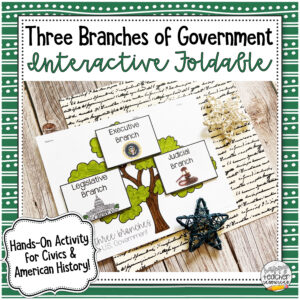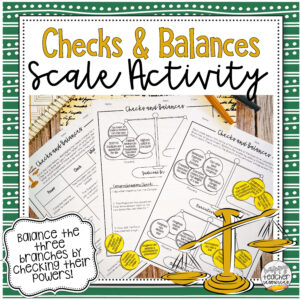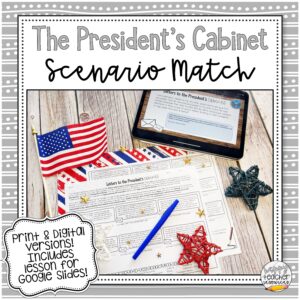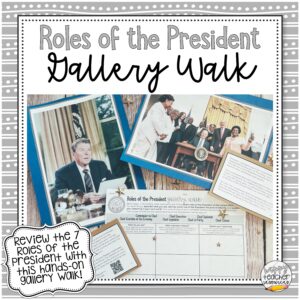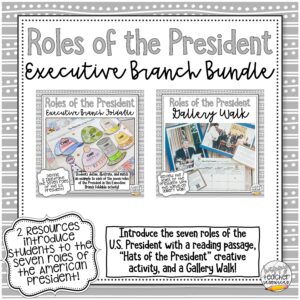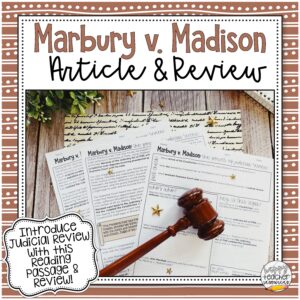This Legislative Branch Article & Review covers just about everything your middle school Civics or American History students need to know about the United States Congress. A six-page, easy-to-read article covers key concepts and vocabulary on the Legislative Branch, and three pages of review offer plenty of graphic organizers for students to take notes! Kick off your Constitutional unit with this comprehensive print-and-go lesson!
✯ Aligned to the Florida State Standard for Middle School Civics, SS.7.CG.3.3: Articles I, II, and III of the United States Constitution, the reading passage introduces students to the Legislative Branch and covers the following topics:
- What is the Legislative Branch? With key facts about the House and Senate, including the number of members, term limits, chief officials, and special responsibilities unique to each chamber.
- Who can run for Congress? This page details the qualifications for office and includes a few fun facts — did you know the oldest serving member of the House retired at the age of 91?
- What are the powers of Congress? The Enumerated and Implied Powers are detailed, including two types of laws Congress cannot pass: ex post facto laws and Bills of Attainder.
- How are the powers of Congress limited? This page details how the Executive and Judicial Branches check Congress — and how Congress can check them in return.
- What are the types of Congressional committees? How does Congress pass laws? Standing, special/select, and conference committees are defined, with examples given.
- How does a bill become a law? An infographic details the legislative process. (Want to go more in-depth? Check out my How A Bill Becomes a Law Board Game!)
✯ Three pages of review cover key vocabulary, a comprehension question about the Elastic Clause, and plenty of eye-catching graphic organizers to help students organize their notes on the Legislative Branch.
- Review Page 1: This worksheet asks questions about key concepts to check student comprehension. Can this person run for Congress? How many votes does Congress need to override a Presidential veto? What is the process of Impeachment? This review is a great way to make sure kids were paying attention and retaining the information from the article.
- Review Page 2: A graphic organizer for key ideas regarding the House and Senate. How many members? What are the term limits? Enumerated Powers? How is Congress checked by the other branches? Students can use this graphic organizer to take notes on the reading passage!
- Review Page 3: How a Bill Becomes a Law! Another graphic organizer for the steps in the legislative process.
This resource comes as a non-editable PDF and includes an Answer Key! There is also a digital version available through TPT Easel, which can be assigned directly to Google Classroom or shared with your students via a link!
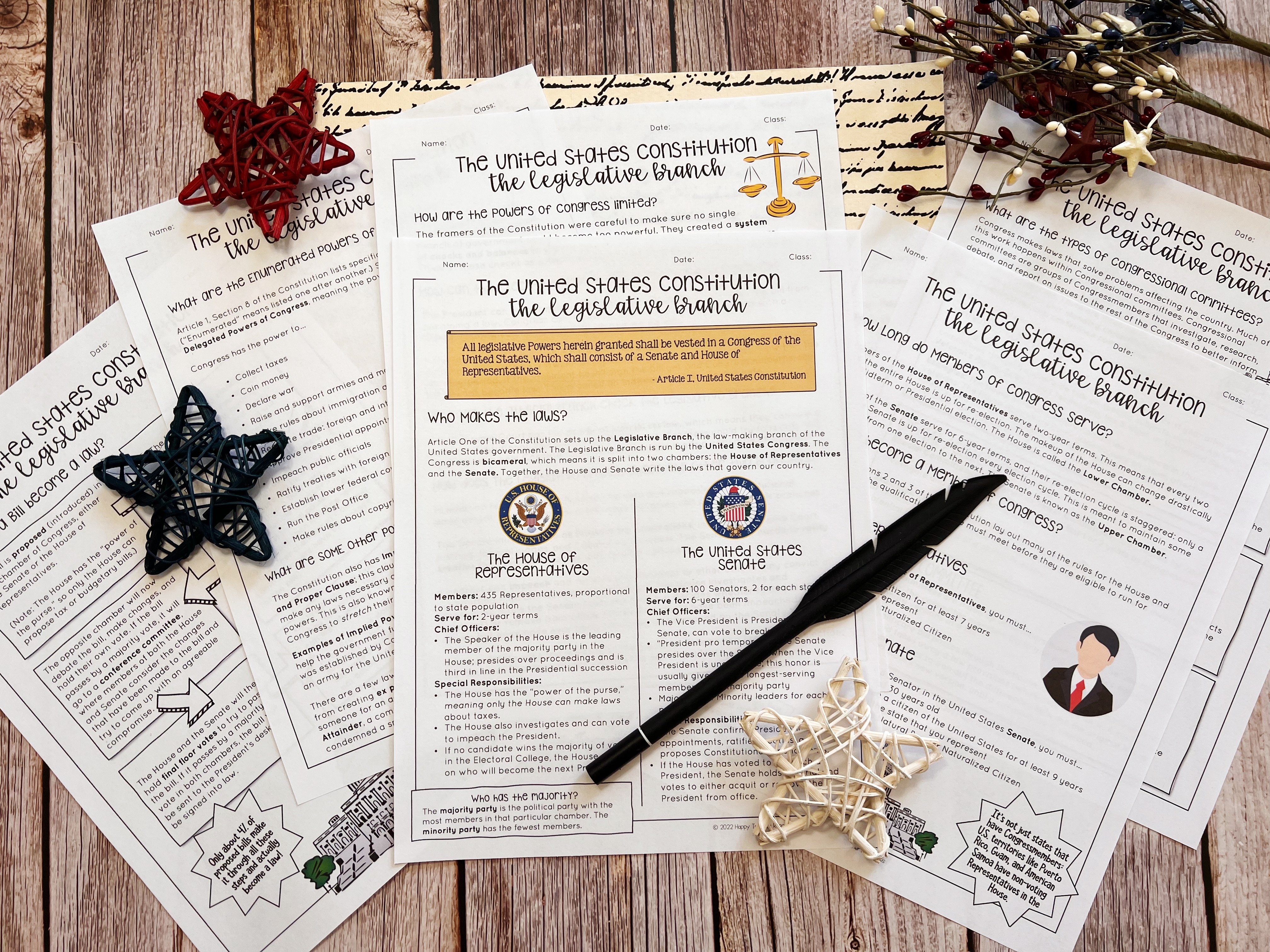
More Happy Teacher Products You Might Enjoy:
✩ How A Bill Becomes A Law Board Game | Legislative Branch Activity for Civics!
✩ Three Branches of Government Foldable | Interactive Notebook for Civics
✩ Who Can Run? Qualifications for Political Office Article & Review for Civics
Become a happy teacher — join the email list!
Never miss a new product or a sale by signing up for an email subscription! I send periodic emails recapping new products, updates, and upcoming sales. Plus, you’ll get a free week of Civics Bell Ringers just for signing up!
Enter your email below to get started.
You can also follow Happy Teacher Resources on social media: Instagram | Facebook | Pinterest


